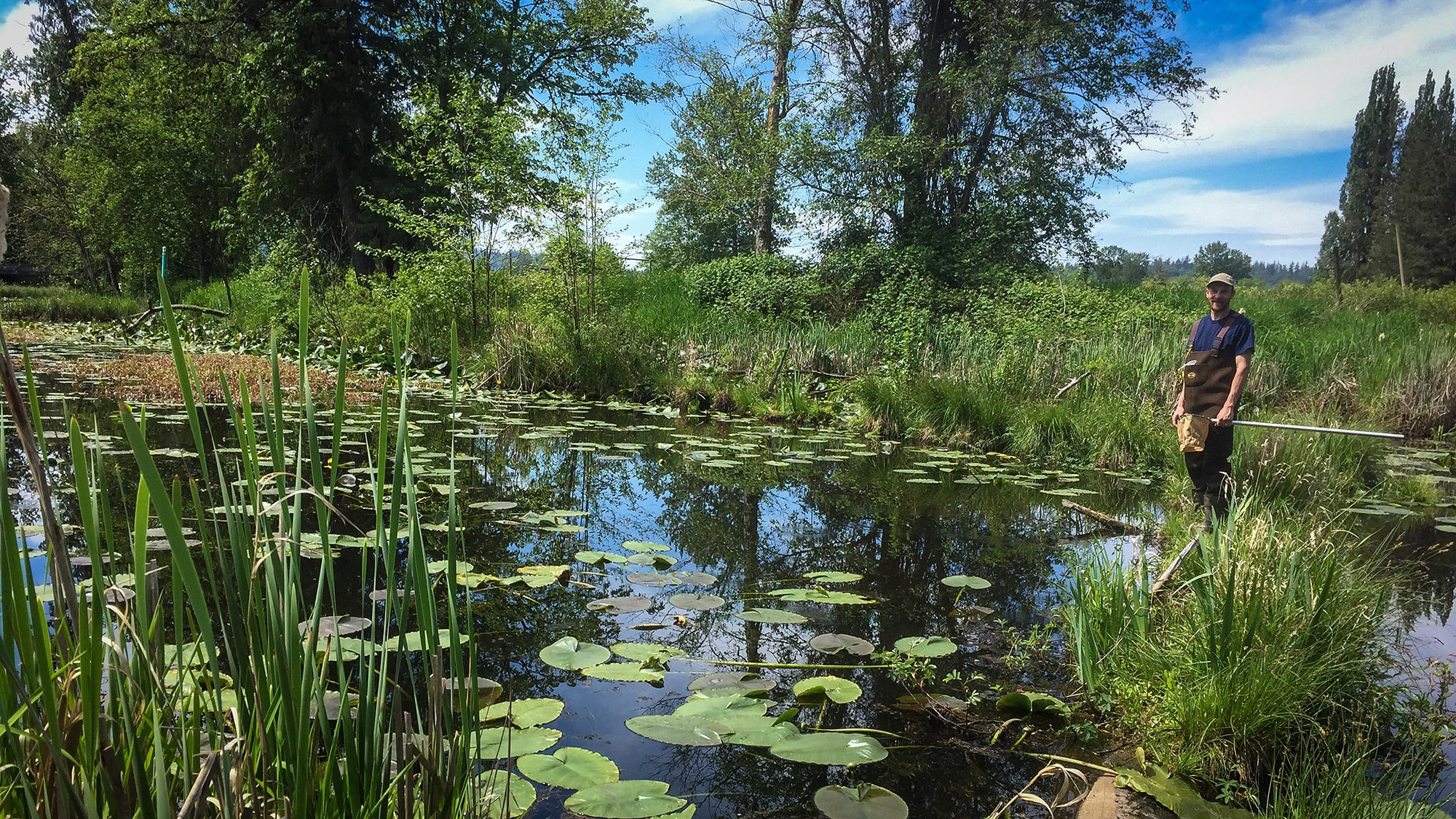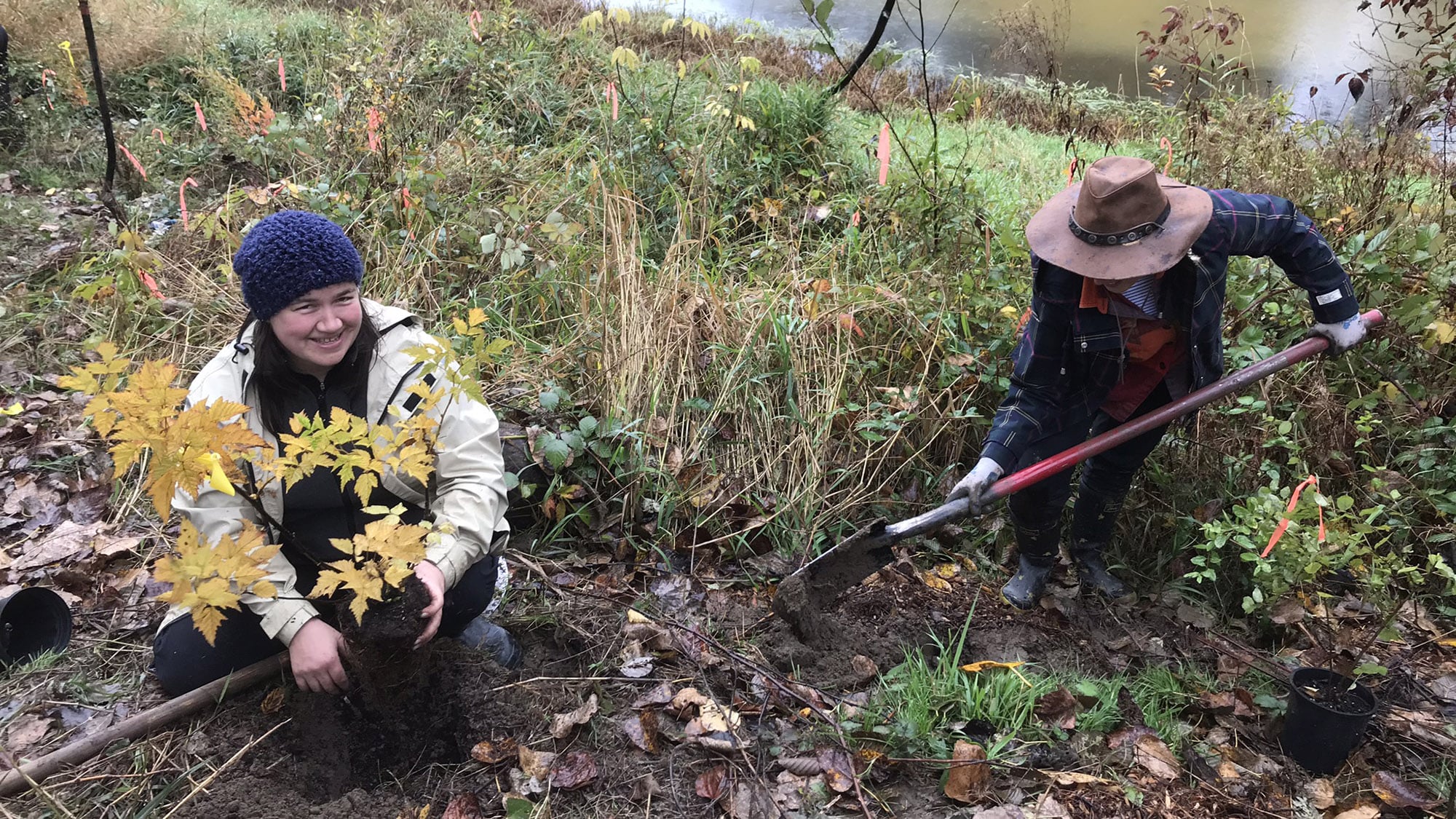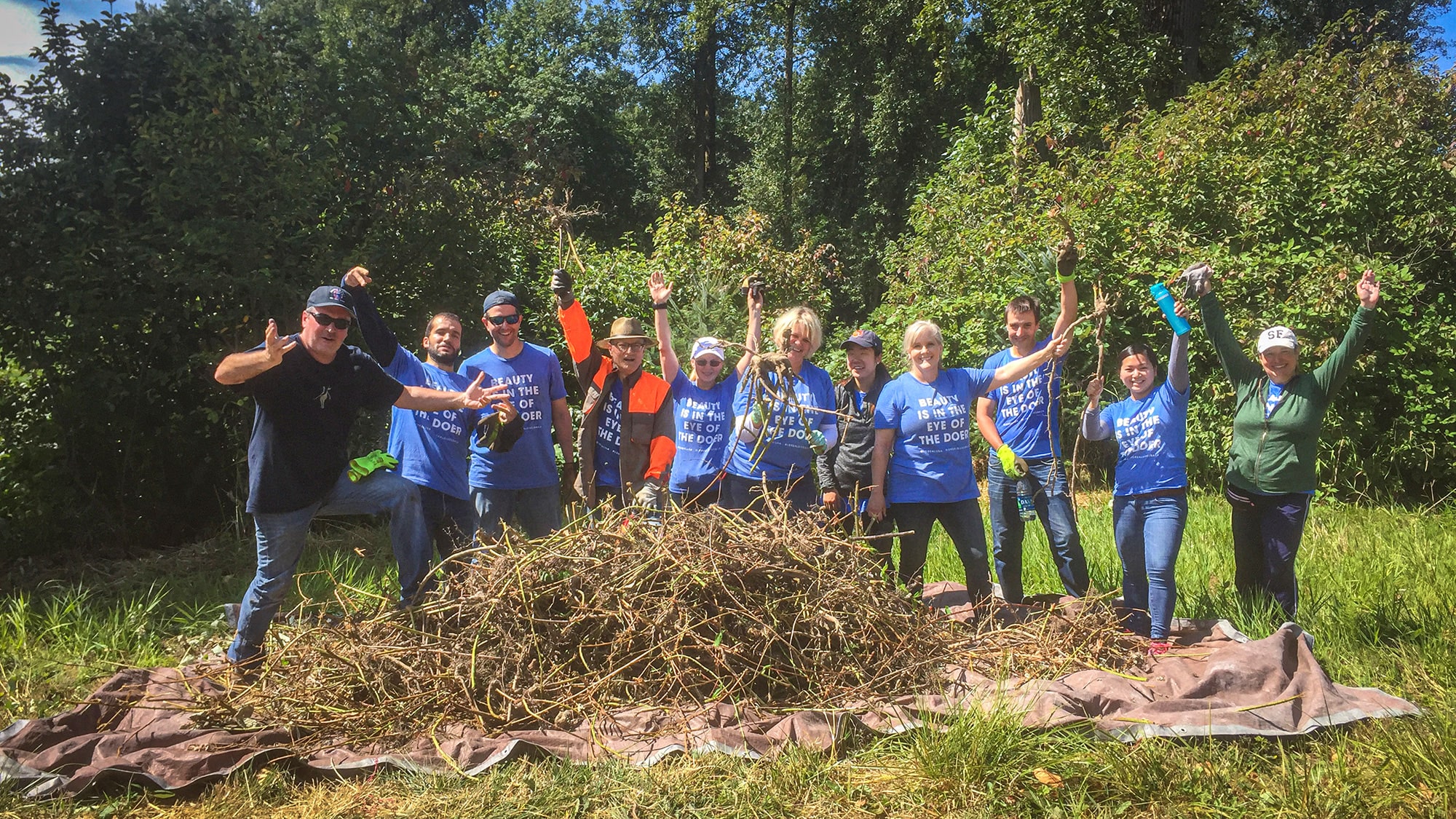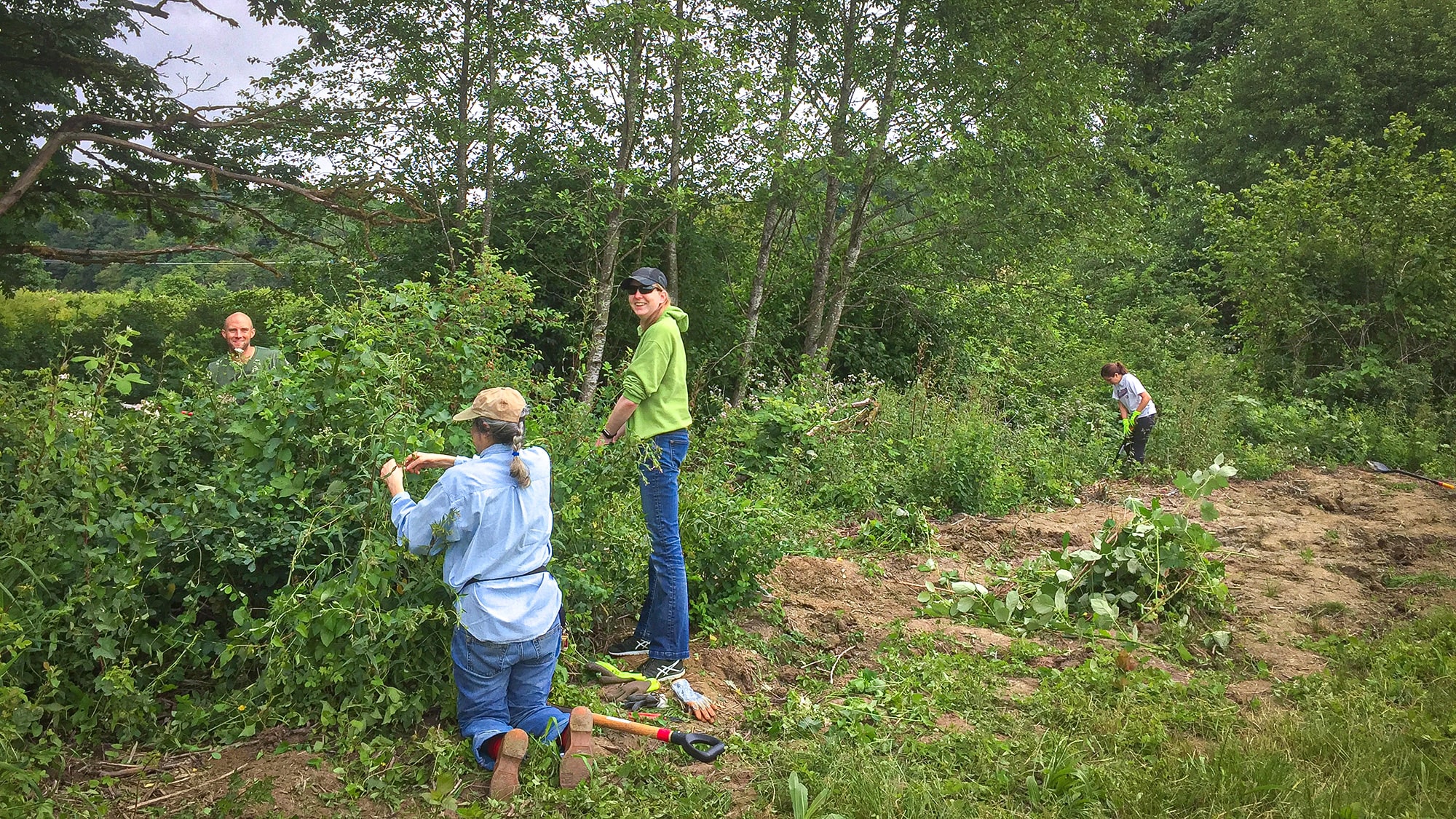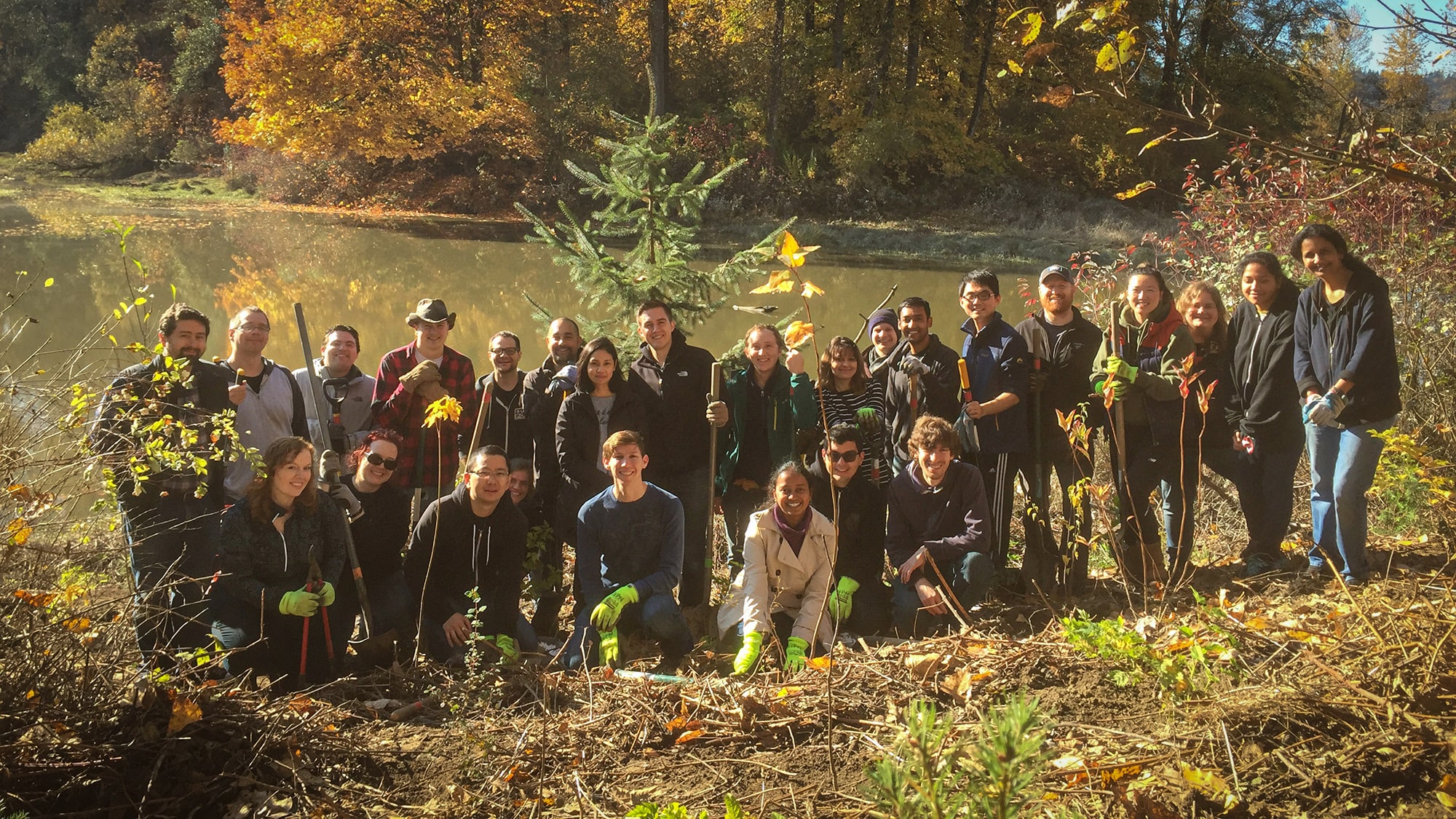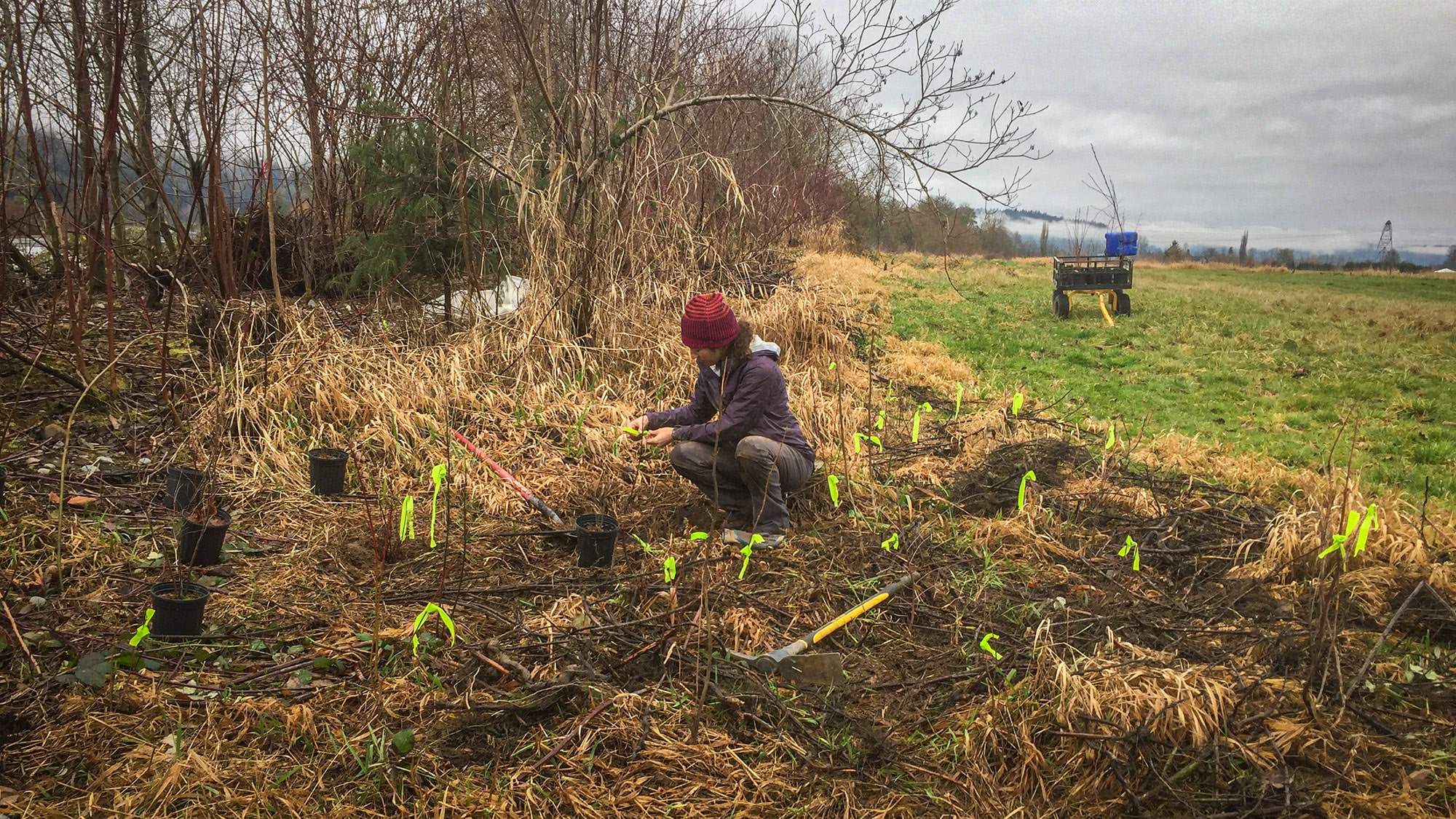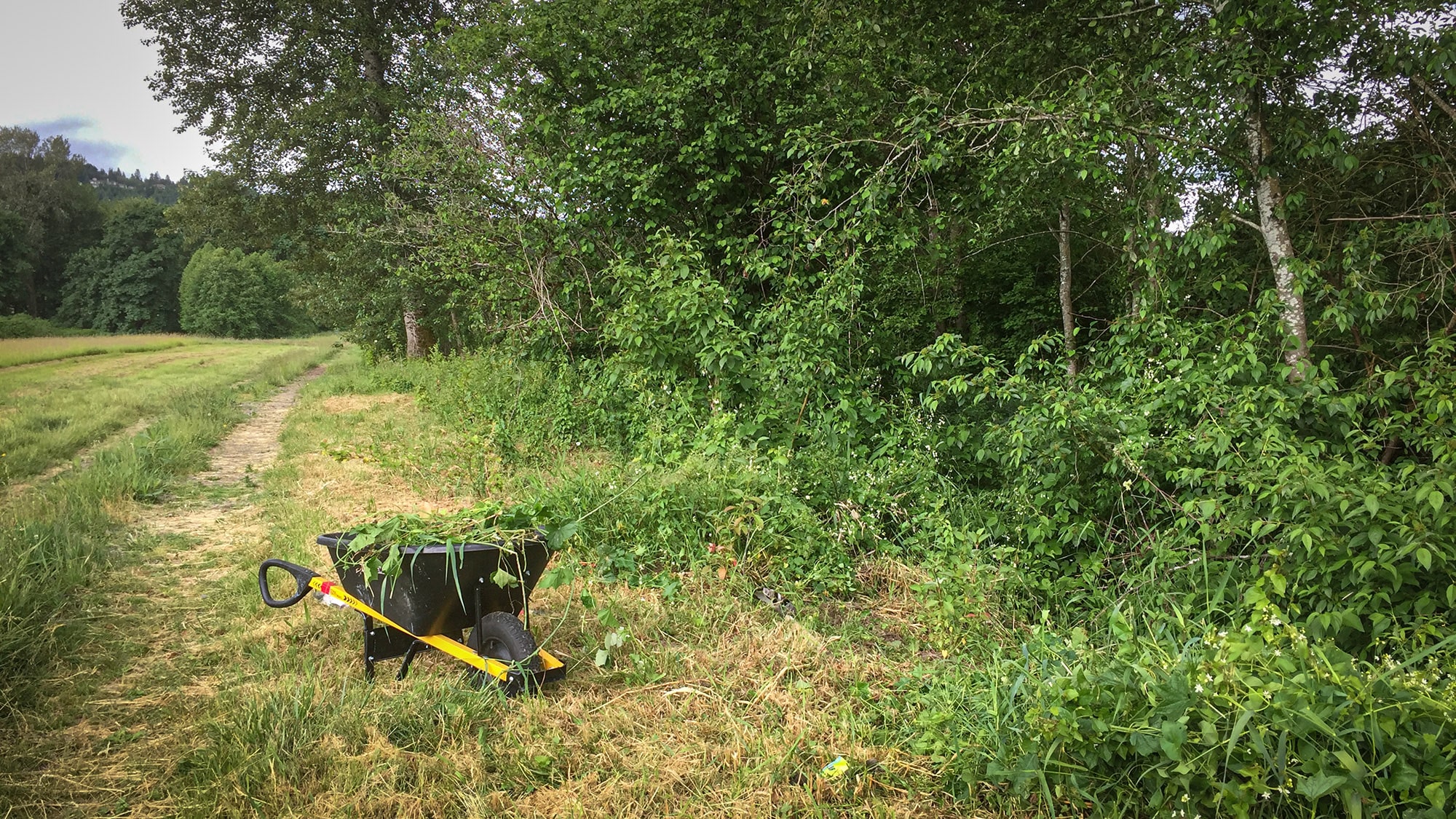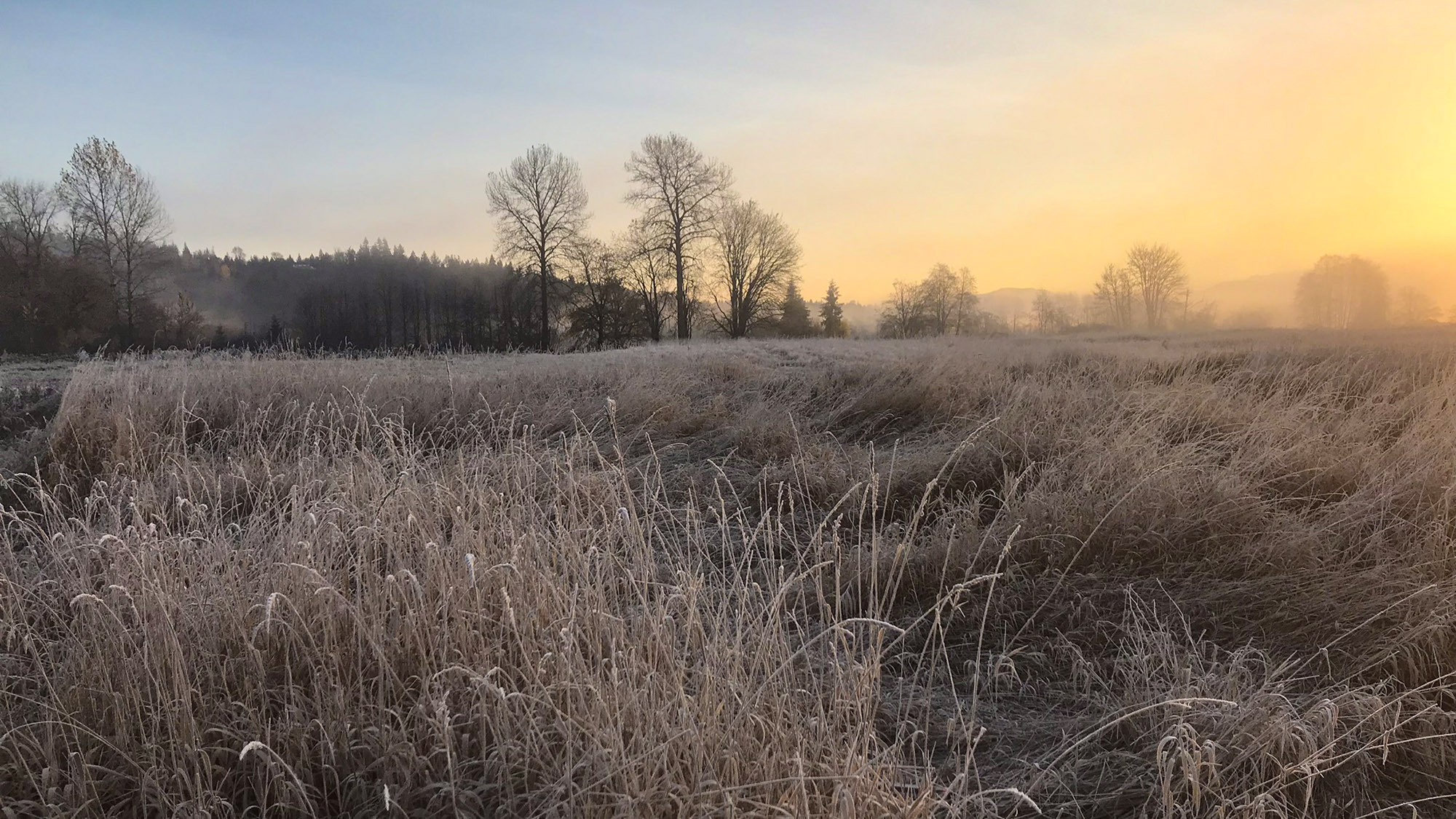Conservation
Oxbow’s Conservation program aims to harmonize ecosystem health with human needs through sustainable agriculture, thoughtful forest management, and ecological restoration.
At the center of Oxbow is the idea that we can produce healthy food from the land and still have rivers and streams full of fish, ponds raucous with the calls of birds and frogs, and clean water and air to drink and breathe.
Today, human activities directly impact 83% of the earth’s surface and 98% of farmable lands1. Our cities and farms have disrupted the habitats of many of the planet’s animals and plants and changed the way our ecosystems function2. If we want to pass on to our grandchildren a world full of the natural wonders we knew as kids — a world with salmon and salamanders, clean waters and sweet air—we need to figure out how to protect that world, or sometimes bring it back, right in the farms, suburbs, and cities where we live.
We believe we can reconcile our human needs and the health of our ecosystems through practicing sustainable agriculture, thoughtful management of our forests, and ecological restoration. What’s more, we’re doing it.
We practice and advance the art of ecological restoration
Reviving complex forest ecosystems through restoration is an art and a science. At Oxbow we seek not only to grow back our riparian forests and enhance our wetland habitats, but also to contribute to the regional body of knowledge about the best ways to do that work.
>>Learn more on our restoration page!
We study and monitor the ecological impacts of land use and restoration
We are carefully and quantitatively monitoring the progress of our restoration plantings and trying innovative approaches to restoring biodiversity where invasive species dominate the landscape.
We are studying the ways that wildlife use our shared landscape. In partnership with community scientists and researchers at the University of Washington, Oregon State University, Puget Sound Bird Observatory, Woodland Park Zoo, WA Dept. of Fish and Wildlife and Washington State University, we look at the responses of birds, bees, mammals, and amphibians to human land use and ecological restoration.
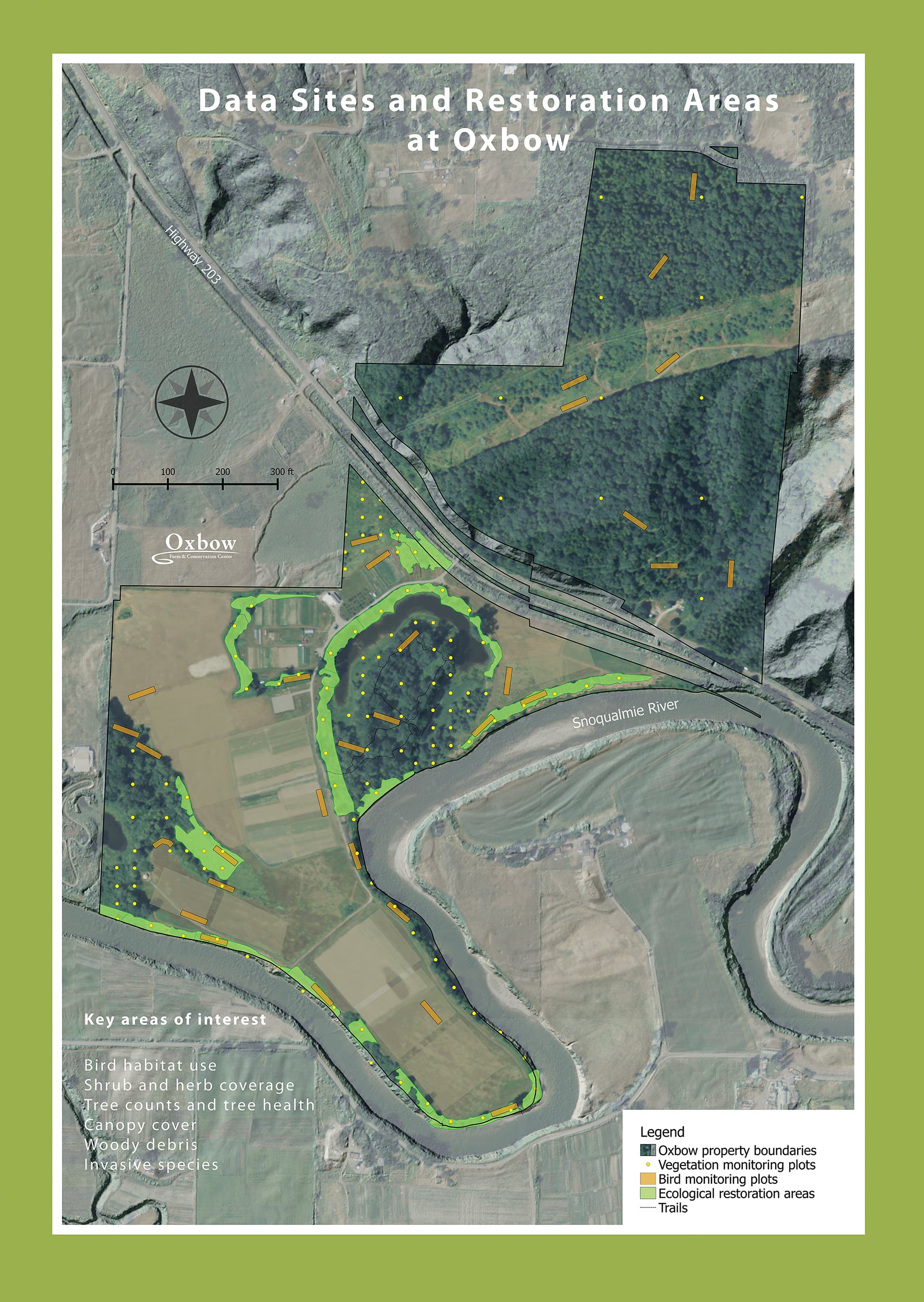
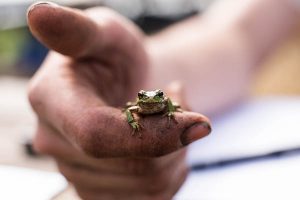
We involve YOU – and need your help to succeed – in all of this work!
Throughout the year we invite people in our community to come and join us in the joyful work of restoring the land. Learn more about our volunteer opportunities here.
We are also growing our circle of community scientists to help us to continue our bird monitoring. If you are a birder and are interested in joining this effort, contact Matt Distler, Conservation Program Manager (matt@oxbow.org).
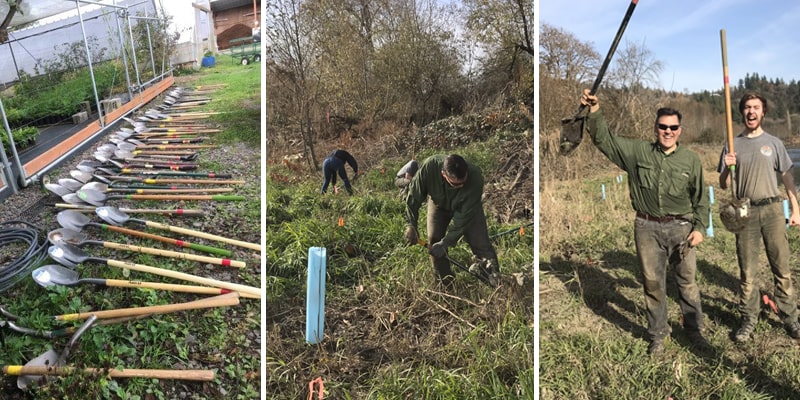
We work with our community to provide resources and solve problems
See our resources and ecosystems studies pages to learn more about how to deal with invasive species, support wildlife on your own land, plan for climate change, and many other related topics, as well as the ways Oxbow is working with community partners to work on these problems.
There’s a lot to learn about how food systems and ecosystems are interwoven, but if we want to pass on a wondrous natural world to our grandchildren, then we need to figure out how to farm and live in the natural world without destroying it.
1Sanderson, E W, Jaiteh, M, Levy, M A, Redford, K H, Wannebo, A V, and Woolmer, G, 2002. The human footprint and the last of the wild: BioScience, v. 52, iss. 10, 891–904 %U http://www.bioone.org/doi/abs/10.1641/0.
2 Millennium Ecosystem Assessment, 2005. Ecosystems and Human Well-being: Biodiversity Synthesis. World Resources Institute, Washington, DC.
3Collins, B.D. and Sheikh, A.J. 2002. Mapping historical conditions in the Snoqualmie River Valley (RM0-RM40). Report to King County Department of Natural Resources.
